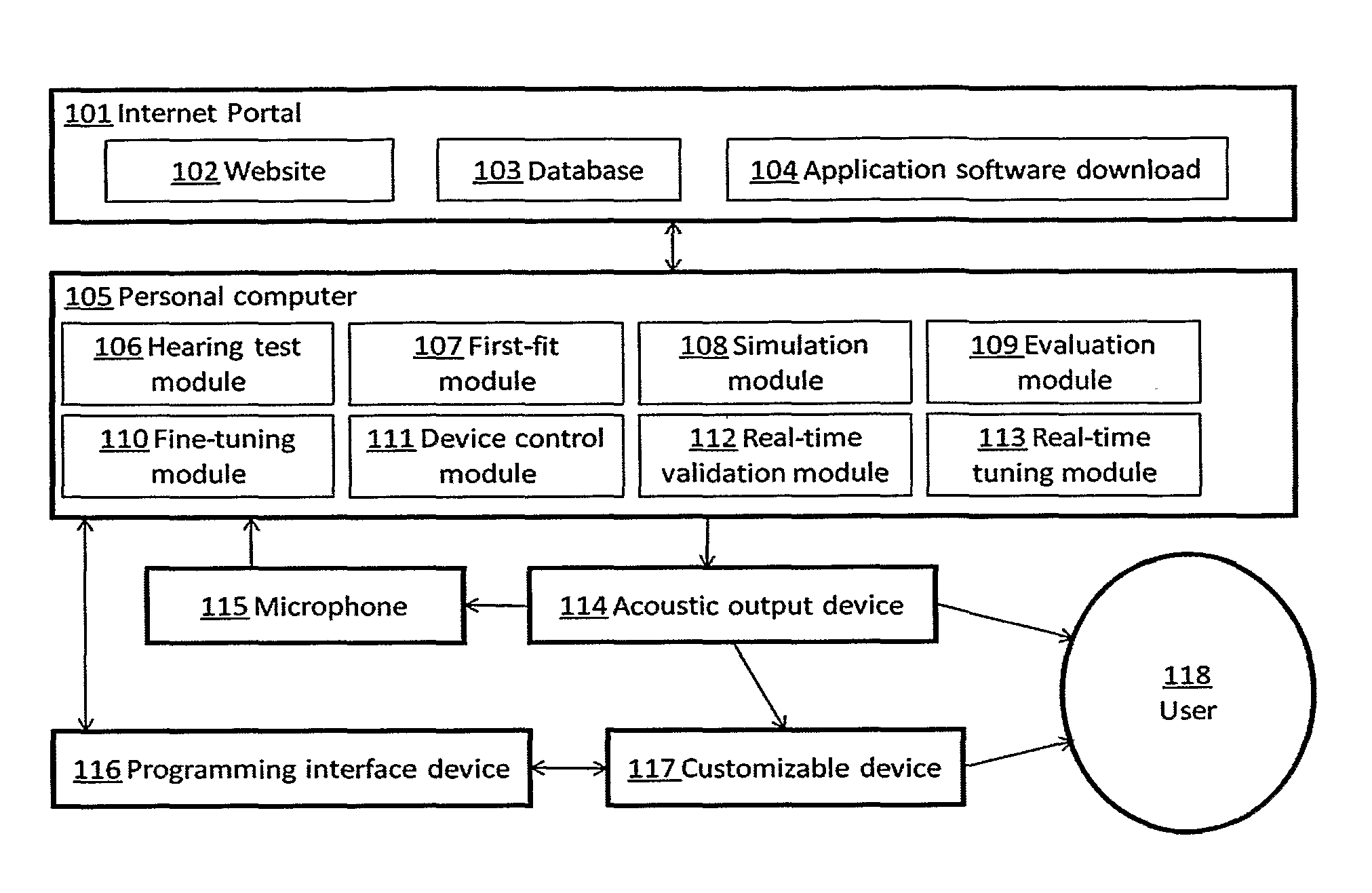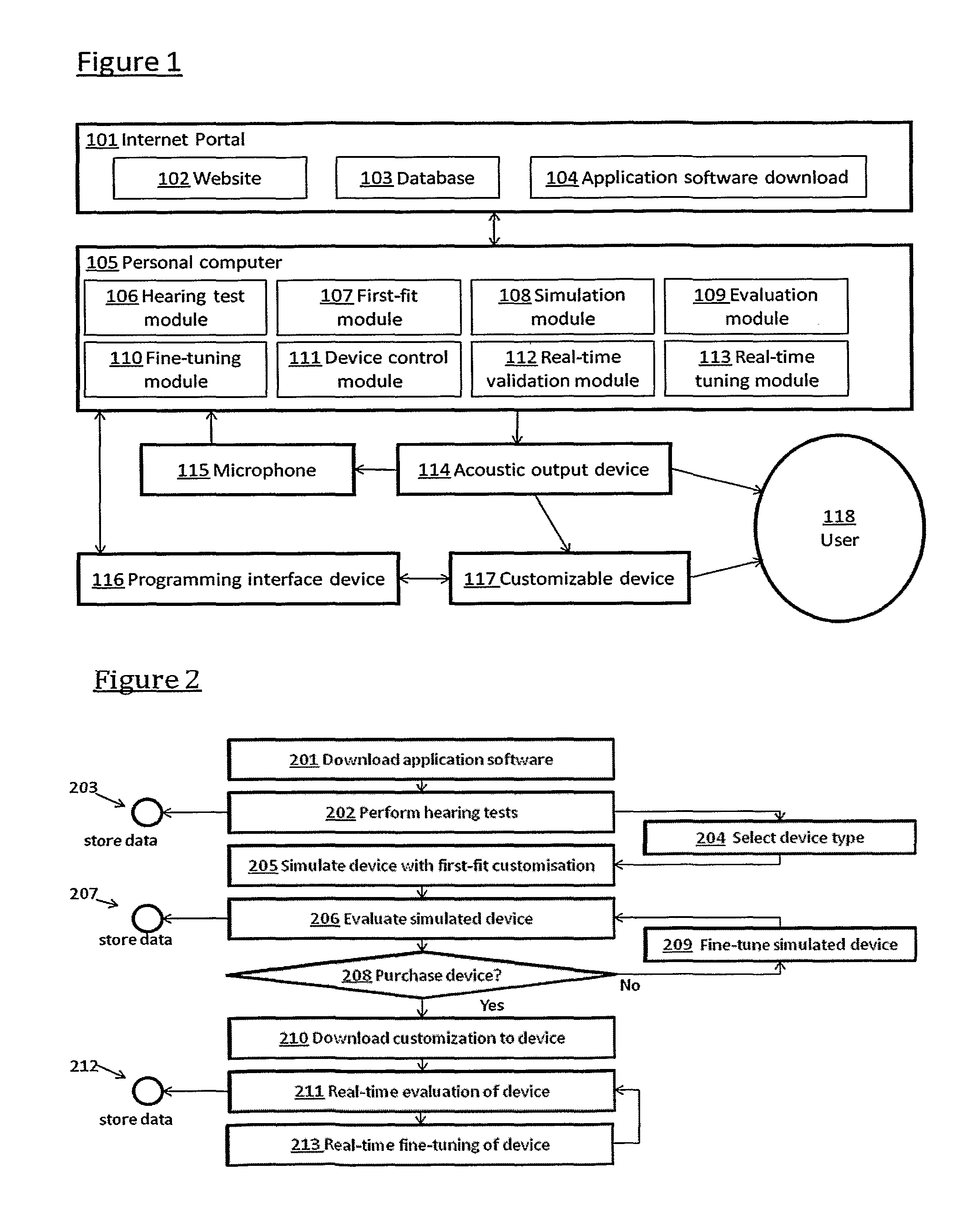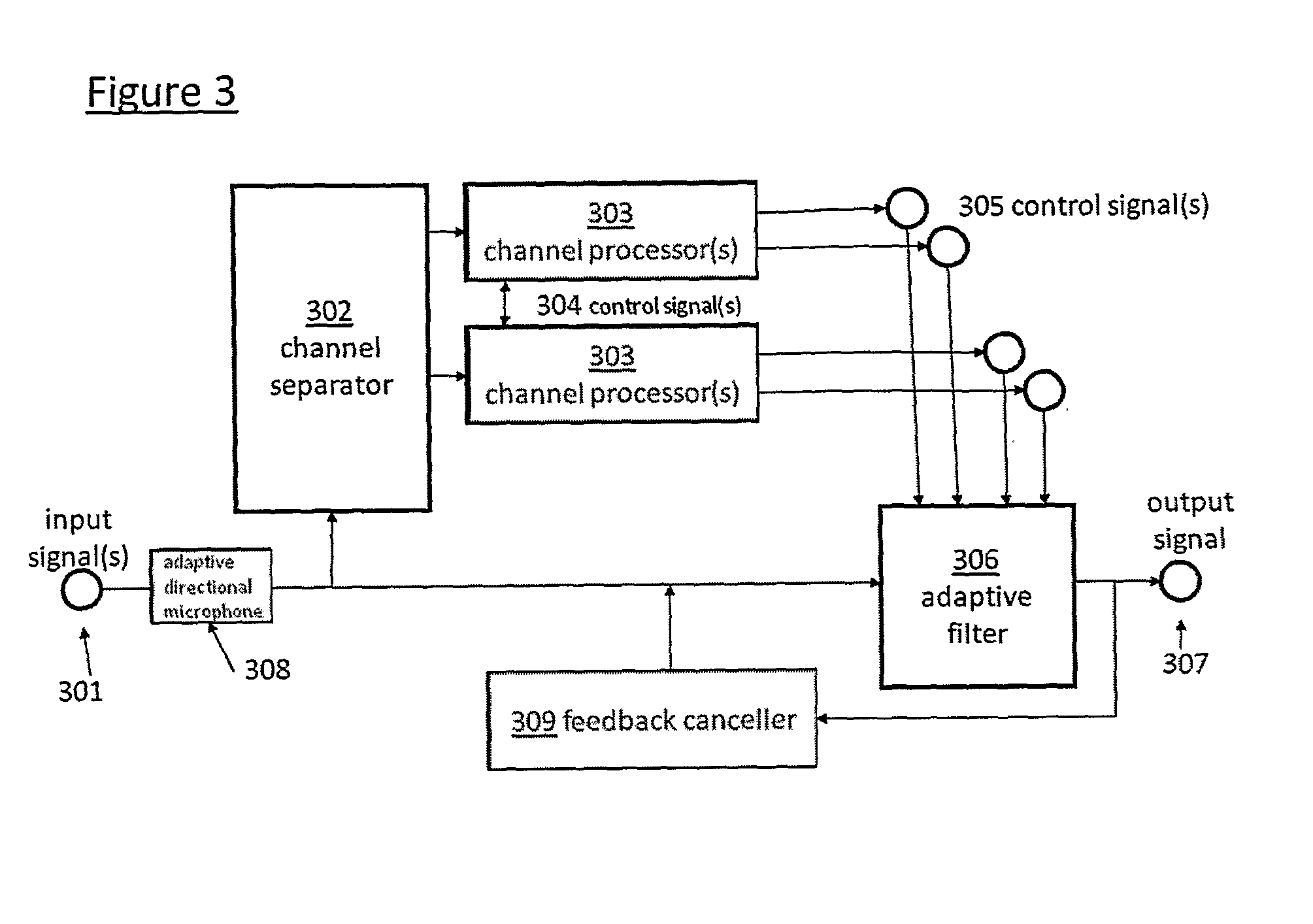Automated fitting of hearing devices
a technology of hearing devices and automatic fitting, which is applied in the direction of deaf-aid sets, deaf-aid adaptation, electrical apparatus, etc., can solve the problems of increasing adding to the cost of hearing aids, and hearing aid users with limited or delayed access to fitting or re-fitting services, etc., to facilitate the adjustment of devices, facilitate the effect of rapid technology development and convenient adjustmen
- Summary
- Abstract
- Description
- Claims
- Application Information
AI Technical Summary
Benefits of technology
Problems solved by technology
Method used
Image
Examples
Embodiment Construction
[0068]FIG. 1 is a block diagram illustrating one embodiment of an online audiology system for automatically mapping a user's hearing and for pre-fitting a sound processing device in accordance with the present invention. The internet portal 101 comprises a website 102, a database 103, and downloadable applications software 104.
[0069]The function of the website 102 is to attract consumers, explain the potential advantages of using the online audiology system for the enhancement of hearing for individual consumers, explain the contribution of online audiology to the advancement of hearing science and technology, and to provide access to the database 103 and downloadable software 104.
[0070]The database 103 stores technical information about devices, the results of hearing tests for individual consumers, and the results of simulated and real-time evaluations of consumers using specific devices. The data for individual consumers is de-identified in the database 103 to ensure the security...
PUM
 Login to View More
Login to View More Abstract
Description
Claims
Application Information
 Login to View More
Login to View More - R&D
- Intellectual Property
- Life Sciences
- Materials
- Tech Scout
- Unparalleled Data Quality
- Higher Quality Content
- 60% Fewer Hallucinations
Browse by: Latest US Patents, China's latest patents, Technical Efficacy Thesaurus, Application Domain, Technology Topic, Popular Technical Reports.
© 2025 PatSnap. All rights reserved.Legal|Privacy policy|Modern Slavery Act Transparency Statement|Sitemap|About US| Contact US: help@patsnap.com



